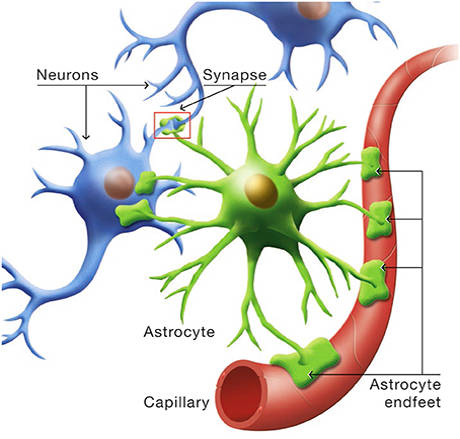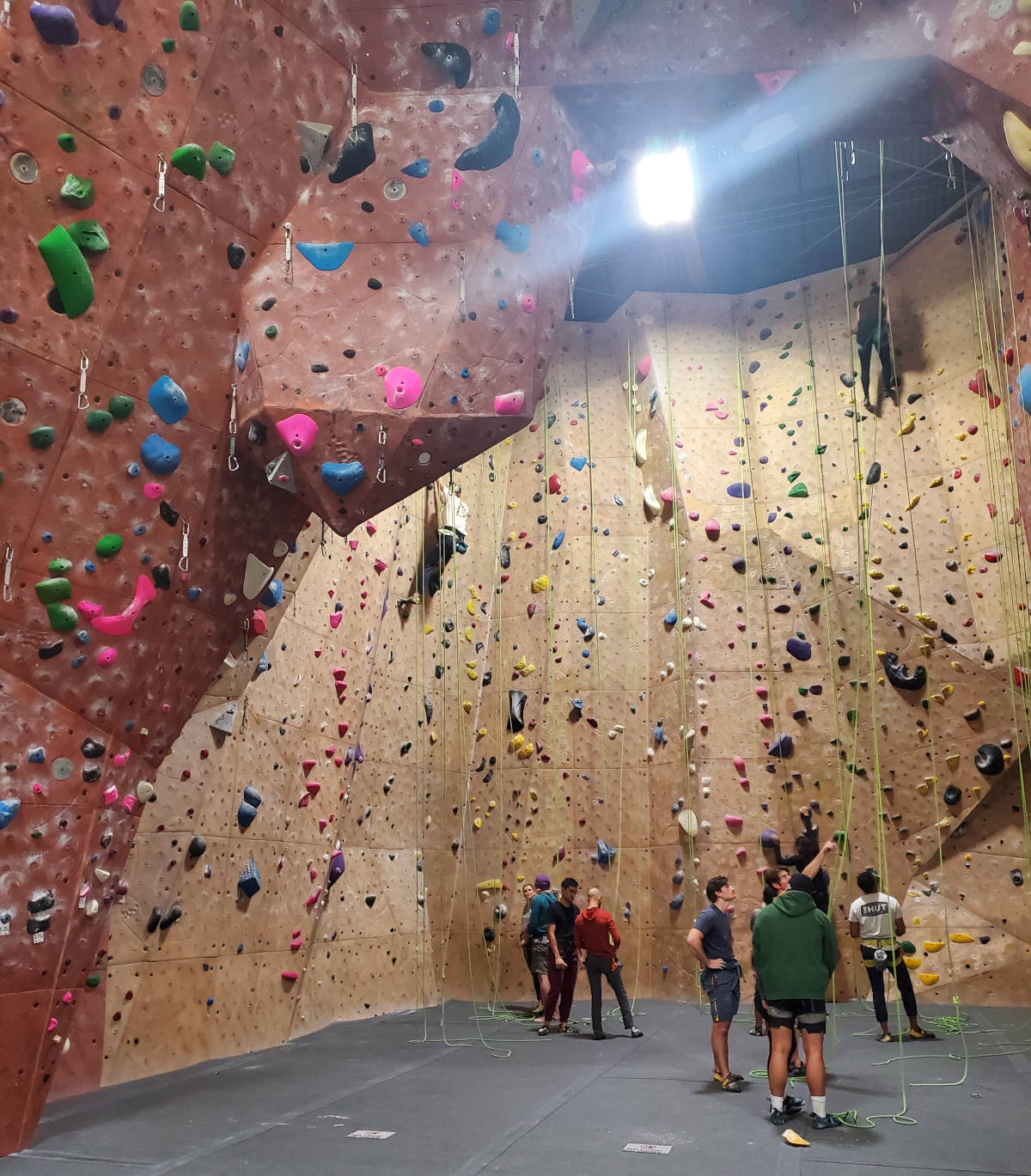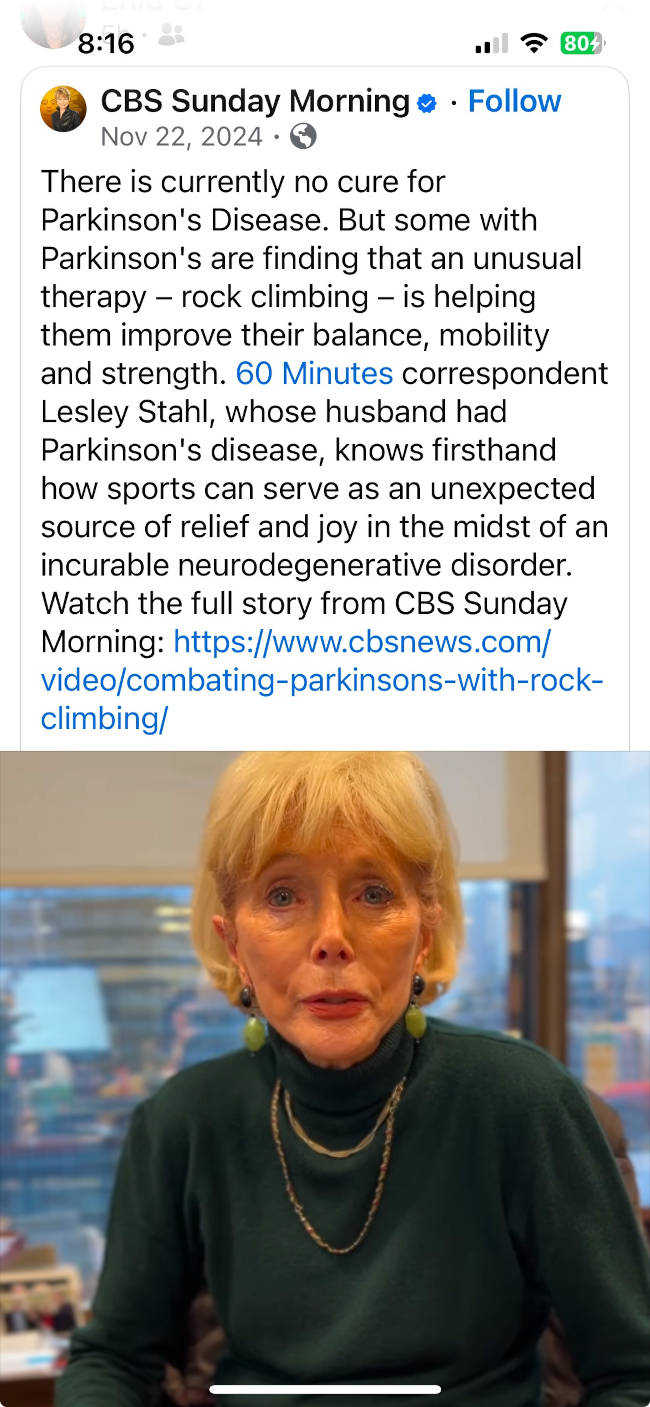Exercise and Physical Therapy for Parkinson's Disease:
Exercise:
Research has shown that vigorous exercise can make improvements in the physical movement of Parkinson's patients and also help diminish the risk of developing Parkinson's disease. Exercise can help repair dysfunctional motor control and enhance supporting cellular systems.
Enhanced Neuroplasticity:
While Parkinson's disease degrades and kills off neurons, exercise has been shown to support neuroplasticity to help counter some the effects.
Neuroplasticity has the following components:- development of new neural connections (Neurogenesis, Synaptogenesis)
- synaptic restructuring and morphology (rewiring and development of neural pathways for repair and development of new function)
- maintaining homeostasis (preferred and healthy biological status quo)
- learning new behavior
- relearning lost behavior

Neurotrophic Factors:
Neurotrophic factors are a family of molecules that support neuron growth, survival and development in the brain and nervous system. The body's production of neurotrophic factors is encouraged to fight the decline of neuronal health that one experiences with Parkinson's disease.
There are three types of neurotrophic factors:- Neurotrophins:
- Brain-derived neurotrophic factor (BDNF): a key factor in neuronal survival
- Nerve growth factor (NGF): helps decrease tissue inflammation and promotes myelination (the generation of the protective layer on a neuron's axon)
- Glial Derived Neurotrophic Factors (GDNF): helps protect dopaminergic neurons against neurotoxins
- Neuropoietic Cytokines:
Exercise and Neurotrophic Factors:
Aerobic Exercise: Strenuous aerobic exercise has been shown to increase the blood levels of neurotrophic factors that encourage the healing and creation of new neurons to directly challenge Parkinson's disease, which progresses by damaging and killing off neurons in the substantia nigra. A 2016 meta-study (an aggregation of multiple studies) published in "PLoS One" supports the theory that exercise increases resting concentrations of Brain-Derived Neurotrophic Factor (BDNF) and Nerve growth Factor (NGF) in the peripheral blood (both plasma and serum), which in turn was linked to the repair and growth of neurons as well as an increase in neuronal connections. It was found that aerobic exercises but not resistance training, supported increased resting BDNF concentrations and that there was no significant difference in effect between males and females. This refers to exercise where the intensity is greater than 50% of peak oxygen uptake (VO2).
Another study found that those subjects in the exercise conditions on average experienced an approximately 30% increase in serum BDNF levels compared to their baseline and a 45% increase when compared to a sedentary control group.
The maximum and most meaningful elevation of BDNF elevation was found for those vigorously exercising at 80% heart rate reserve for at least 40 minutes.
One's upper sustainable heart rate can be measured or estimated: 211 - (age x 0.64)
Multiply this by 0.80 to get your 80% value. One can use a heart rate monitor to observe actual values during training.
- The Effect of Exercise Training on Resting Concentrations of Peripheral Brain-Derived Neurotrophic Factor (BDNF): A Meta-Analysis (2016)
- The Effects of Aerobic Exercise Intensity and Duration on Levels of Brain-Derived Neurotrophic Factor in Healthy Men (2013)
Aerobic Exercise and Environmental Enrichment: An enriched and stimulating environment has also been shown to improve cognitive and mental health. Animal studies with environmental enrichment (EE) with toys, activities, mazes, etc have shown improvement in metabolism, learning and cognition, anxiety and depression, and immunocompetence (normal immune response). Biological changes included activation of the hypothalamic-sympthoneural-adipocyte (HSA) axis (brain communications pathway) and the upregulation of brain-derived neurotrophic factor (BDNF).
References:
Aerobic Exercise and Neural Conectivity: Aerobic exercise was shown to have shifted neural conectivity from the sensory motor region of the cortex (the outermost layer of the brain) to the front part of putamen instead to the back part of putamen region of the brain. Generally with Parkinson's disease, the posterior (back part of the) putamen is negatively affected by dopamine depletion. Exercise normalizes the connectivity balance disrupted by Parkinson's disease.
The study also found that exercise lowers brain atrophy (less brain shrinkage), improved cognitive control but did not change the substantia nigra.
References:- Aerobic Exercise Alters Brain Function and Structure in Parkinson's Disease: A Randomized Controlled Trial (Bloem et al, 2022)
"Aerobic exercise, but not stretching, led to increased functional connectivity of the anterior putamen with the sensorimotor cortex relative to the posterior putamen."
"aerobic exercise increased functional connectivity in the right frontoparietal network, proportionally to fitness improvements, and it reduced global brain atrophy."
"MRI, clinical, and behavioral results converge toward the conclusion that aerobic exercise stabilizes disease progression in the corticostriatal sensorimotor network and enhances cognitive performance."
"these findings suggest that aerobic exercise stimulates functional and structural neuroplasticity in both motor and cognitive brain networks in Parkinson's disease."
Aerobic Exercise and Cognitive Skills: Exercise became even more beneficial when it included thought engagement, concentration and skill especially when applied to precision spatial and goal oriented movement. Engagement of cognitive skills such as memory, association, concept formation, pattern recognition, language, attention, perception, action, problem solving and mental imagery coordinated with aerobic exercise, leads to neuroplasticity and to making complex physical behavior automatic. This is where Parkinson's Disease eventually causes failure of rhythmicity and steadiness of gait, by the impaired cognitive ability to perform motion automatically and instead requiring one's total focus just to walk. In contrast to engagement of cognitive skills and motor function, repetitive, mindless exercise with no cognitive engagement is less therapeutic.
References:- Engaging cognitive circuits to promote motor recovery in degenerative disorders. exercise as a learning modality (2016)
It has been found that "goal oriented movement in which temporal and/or spatial accuracy is important for achieving pre-determined objectives such as movements in yoga, Tai chi or amplitude training in patients with Parkinson's"
"... to be effective in treating Parkinson's disease, physical therapy must employ both skill-based exercise (to drive specific circuits) and aerobic exercise (to drive the expression of molecules required to strengthen synaptic connections) components to select those neuronal circuits, such as the corticostriatal pathway, necessary to restore proper motor and cognitive behaviors."
"... rats that learned new motor skills (skilled based exercise) had a greater number of synapses per neuron ... and resulted in a much broader functional connectivity of the prefrontal cortex with the striatum providing evidence of frontal-striatal neuroplasticity in these circuits"
DOI: 10.1515/hukin-2015-0192
Aerobic Exercise and Dopamine Receptors: A study demonstrated that eight weeks of intensive treadmill exercise increased dopamine D2 receptor expression in the basal ganglia by 80 to 90 percent in Parkinson's disease patients. This improved postural control. Results of the study suggest that exercise can lead to neuroplasticity in dopaminergic signaling and contribute to improved function.
References:- Treadmill exercise elevates striatal dopamine D2 receptor binding potential in patients with early Parkinson’s disease (2013)
DOI: 10.1097/WNR.0b013e328361dc13
Aerobic Exercise and Lactate: Lactate is produced via the breakdown of glucose during exercise. A study with mice showed that the lactate build-up from exercise induced the generation of trophic factors which increased astrocyte branching, shape and size. This is important because astrocytes are star-shaped glial cells in the brain and spinal cord which bridge blood vessels to neurons to provide nutrients. Astrocytes are essential for neuron survival and repair as well as axonal growth and are the foundation of the blood-brain-barrier.
References:- Exogenous L-lactate promotes astrocyte plasticity but is not sufficient for enhancing striatal synaptogenesis or motor behavior in mice
- Lactate enhances Arc/arg3.1 expression through hydroxycarboxylic acid receptor 1-β-arrestin2 pathway in astrocytes
Exercise and Parkinson's:
Exercise increases:- synaptogenesis
- angiogenesis
- neurogenesis
- dopamine release
- neurotrophic expression
- dendritic spine formation
- immune response
- blood flow

Building Muscle:
Parkinson's disease most often includes muscle atrophy because there are fewer functional motor neurons actuating the muscles. Weight training can help combat muscle atrophy. This denervation of skeletal muscle can also be treated with heat stress treatment. A Japanese study with mice showed that exposure to a hot environment (40 degree C, 104 degrees F) for 30 min/day for 7 days showed efficacy in regaining muscle mass (15%).
References:- Daily heat stress treatment rescues denervation-activated mitochondrial clearance and atrophy in skeletal muscle J Physiol (Tamura Y, Kitaoka Y, Matsunaga Y, Hoshino D, Hatta H. 2015)
gy
DOI: 10.1113/JP270093
Genetics:
It is also speculated that a genetic SNP in the gene encoding BDNF may have an impact on the effect of exercise on BDNF concentrations, in other words, some may be genetically predisposed to see a more profoundly positive effect from exercise than others. See Genetics and Parkinson's Disease coverage of the genetic SNP rs6265.
Vascular Health:
Exercise also has an effect on "Cerebral Vasculature of Healthy Aged Subjects".
High levels of aerobic activity was found to increase the number of small-caliber blood vessels in the brain, giving some elderly subjects the characteristics of the brains of much younger individuals.
Exercise also had an effect on lowering the twisty, curved nature of the blood vessels as well, allowing for better flow.
This curved trait of the blood vessel is called "Tortuosity" and when it increases, is also an indicator of aged blood vessels, hypertension and other diseases.
Exercise increases growth of small blood vessels and lowers their Tortuosity.
Reference: American Journal of Neuroradiology The Effect of Exercise on the Cerebral Vasculature of Healthy Aged Subjects as Visualized by MR Angiography
Exercise Is Good:
Exercise can reduce inflammation and thus reduce the impediments to the immune system and its ability to counter alpha-synuclein. Exercise also has an effect on serotonin and endorphin levels in the brain which positively affects one's mood with anti-anxiety and anti-depressant effects.
Dr. Giselle Petzinger on Exercise for Parkinson's Disease
Physical Therapy:
Exercise is the general term for physical movement intended to improve the health of the patient while physical therapy (PT) is focused on specific motions to restore restricted movement suffered from injury or disease (eg Parkinson's). Parkinson's Wellness Recovery (PWR) physical therapy is a specific set of large amplitude, high effort and attention to action training exercises meant to target multiple symptoms of Parkinson's disease. Emphasis is on performing multiple coordinated actions (dual-tasking or multi-tasking), weight shifting, axial mobility and transitional movements. The goal is to counter rigidity, bradykinesia (slow movement), hypokinesia (disposition to small movements) and loss of coordination. Physical therapists certified in PWR!Moves or a Neurologic Clinical Specialist (NCS) physical therapist can tailor a physical therapy program suited to your physical level.
PT Videos:
PWR!4Life Exercise Essentials (Intro):
A video introducing the concepts of PWR! physical therapy presented by the founder of the movement Becky Farley PhD, MS, PT.
PWR! Moves Positions - Supine:
Exercises for lying on your back
Pole Walking Exercises:
Exercises for those who's balance may be compromised and find a walking pole to be helpful.
Video from Re+Active Physical Therapy & Wellness (Torrance CA)
How to get Unstuck from a Parkinson's Freezing Episode - The "5S" Method:
A method to cope with a Parkinson's Freezing Episode.
PdWarrior:
This team headed by neurophysiotherapist Melissa McConaghy, categorizes work-outs to address the view that there are three types of Parkinson's:
- bradykinesia (slowness of movement and shuffling)
- tremor dominant Parkinson's
- agility impared (freezing of motion, falling)
Start the six part series here
The program employs four key principals:
- based on neuroactive exercise meant to rewire your brain
- education to empower you understand why these techniques work
- motivation for long-term exercise behavior and long-term behavior change to stay motivated and include exercise as part of your daily routine
- building a support network to make the exercises enjoyable and hold you accountable
Rock Climbing:

Touchstone Climbing's Mission Cliffs
Rock climbing can help help maintain strength and muscle tone, exercise balance and big movement while providing a social environment which helps combat anxiety and depression. The hyper-focus on movement and coodination that accompanies rock climbing, is also very therapeutic.
References:- Vertical locomotion improves horizontal locomotion: effects of climbing on gait and other mobility aspects in Parkinson’s disease. A secondary analysis from a randomized controlled trial (2024, Agnes Langer et. al)
"sport climbing reduces bradykinesia, tremor, and rigidity in mildly to moderately affected participants with Parkinson’s disease" - A randomised controlled trial on effectiveness and feasibility of sport climbing in Parkinson’s disease (2021, Agnes Langer et. al)
"In conclusion, this randomised controlled trial shows that sport climbing is a feasible sport even for inexperienced PD patients and that it significantly improves motor symptoms in PD."
Web Resources:
- DanceForParkinsons.org - dance classes for people with Parkinson's disease
- DavisPhinneyFoundation.org: Parkinson's Exercise Essentials Video
- Parkinson's UK Exercise Recommendations
- Rock Steady Boxing
Pros:
- Not likely to suffer any side effects while under the supervision of experts. Intense exercise should help induce the repair and growth of new neurons and have a positive effect on one's motion control. Physical Therapy should improve mobility and balance.
Cons:
- Possible injuries.
